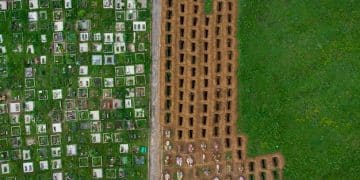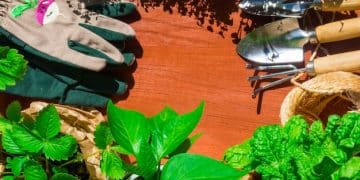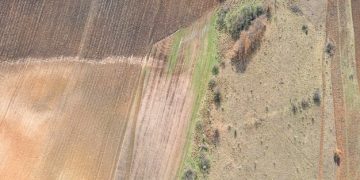Water-Efficient Irrigation: Save Water, Boost Plant Health with Drip Systems
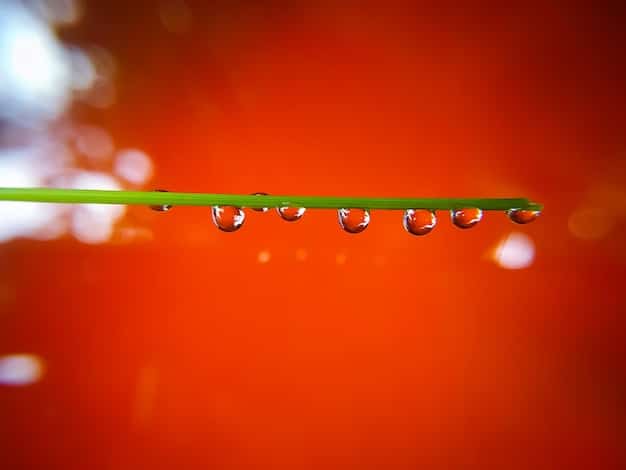
Water-efficient irrigation, particularly through drip systems, is essential for conserving water resources while simultaneously promoting optimal plant health by delivering precise amounts of moisture directly to the root zone, minimizing waste and maximizing absorption.
In an era where environmental consciousness is no longer optional but imperative, innovative solutions for resource conservation are gaining prominence. When it comes to gardening and agriculture, one of the most impactful shifts we can make is towards water-efficient irrigation: use drip irrigation to save water and improve plant health. This method offers a compelling blend of ecological stewardship and practical benefits for any grower, from the backyard enthusiast to the commercial farmer. By rethinking how we deliver water, we not only protect a vital natural resource but also foster more vigorous, resilient plant life.
Understanding the Imperative for Water Conservation
Water, often taken for granted in many regions, is a finite resource under increasing pressure from population growth, climate change, and pollution. Traditional irrigation methods, such as sprinklers or flood irrigation, are notoriously inefficient, often leading to significant water loss through evaporation, runoff, and deep percolation beyond the root zone. This inefficiency not only strains local water supplies but also represents a financial cost to the irrigator and a missed opportunity for optimal plant development.
The call for water-efficient practices extends beyond mere conservation; it’s about building resilience. As droughts become more frequent and severe in many parts of the world, including the US, adopting strategies that maximize water utility becomes critical for food security and ecosystem preservation. Embracing advanced irrigation technologies is not just an environmental choice; it’s a strategic agricultural and horticultural decision that pays dividends in the long run.
The Hidden Costs of Inefficient Irrigation
Beyond the obvious water waste, traditional irrigation methods carry a host of hidden costs. These can include increased energy consumption for pumping water, higher expenses for fertilizers and pesticides washed away by runoff, and the degradation of soil structure due to erosion. Furthermore, overwatering can lead to conditions ripe for fungal diseases and root rot, harming plant health and reducing yields.
- 📈 Reduced water bills and energy consumption
- 🌿 Healthier soil structure with less erosion
- 💰 Lower fertilizer and pesticide costs due to targeted application
- 🦠 Decreased incidence of water-related plant diseases
By understanding these multifaceted impacts, the argument for transitioning to more efficient systems like drip irrigation becomes undeniably strong. It’s an investment in sustainability that yields tangible economic and environmental returns, fostering a more robust and responsive agricultural landscape.
Moving towards water-efficient solutions acknowledges the intricate balance between human needs and environmental stability. It empowers us to grow more with less, safeguarding precious resources for future generations while bolstering the health and productivity of our immediate environment.
What is Drip Irrigation: Principles and Components
Drip irrigation, often referred to as trickle irrigation, is a precise and highly efficient watering method that delivers water directly to the plant’s root zone, one drop at a time. This targeted approach minimizes water loss and ensures that plants receive moisture exactly where and when they need it. Unlike traditional methods that spray water over a wide area, drip systems focus on singular plants or specific rows, drastically reducing evaporation and runoff.
The core principle behind drip irrigation is slow and steady delivery, which allows water to percolate deeply into the soil, encouraging robust root development and preventing superficial watering that can lead to stressed plants. This method also helps maintain consistent soil moisture levels, avoiding the cycles of saturation and drought that can harm plant growth.
Key Components of a Drip System
A typical drip irrigation system comprises several fundamental components, each playing a crucial role in its overall efficiency and effectiveness. Understanding these parts is essential for both installation and maintenance.
- 💧 Water Source Connection: Typically connects to a garden hose, spigot, or main water line.
- 🎛️ Pressure Regulator: Reduces incoming water pressure to a safe level for the drip components, usually around 10-25 PSI.
- filtro Filter: Prevents small particles and debris from clogging the emitters, crucial for system longevity.
- 🚰 Backflow Preventer: Stops irrigation water from flowing back into the potable water supply.
- 🔧 Mainline Tubing: Larger diameter tubing (often 1/2″ or 3/4″) that carries water from the source to various parts of the garden.
- 🌿 Drip Tubing/Emitters: Smaller tubing or individual emitters (drip lines, micro-sprayers, drip rings) that deliver water directly to plants.
- Cap End Caps and Fittings: Used to seal off tubing ends and connect various components seamlessly.
Beyond these primary parts, accessories like timers, air vents, and flush valves can enhance automation and maintenance, making the system even more user-friendly and efficient. The flexibility of drip irrigation allows for customization to suit diverse garden layouts and plant needs, making it a versatile tool for any grower.
By focusing water where it’s most needed, drip irrigation revolutionizes how we approach plant hydration, moving from a broad-brush approach to a surgical precision that respects water as a precious commodity. This precise delivery allows for optimal absorption by plant roots, leading to healthier, more productive plant life with significantly less waste.
Saving Water with Drip Irrigation: A Comparative Analysis
One of the most compelling advantages of drip irrigation is its unparalleled capacity for water conservation. Compared to traditional irrigation methods, drip systems can reduce water usage by 30% to 70%, sometimes even more, depending on the application and previous practices. This substantial saving stems from its fundamental design: direct delivery to the root zone, minimizing losses to evaporation, wind drift, and runoff.
Sprinkler systems, while convenient, spray water into the air, making it susceptible to evaporation, especially on hot, sunny, or windy days. A significant portion of the water released can also drift away from the target area, landing on pathways, driveways, or other non-plant surfaces. Furthermore, rapid application often leads to runoff before the soil can absorb it, wasting precious water and potentially carrying away topsoil and nutrients.
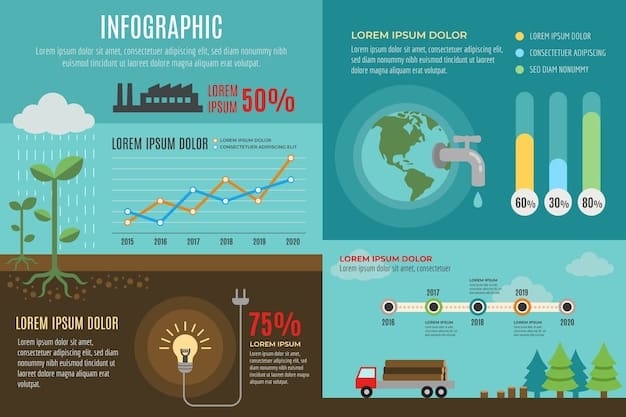
Efficiency Beyond Basic Water Savings
The efficiency of drip irrigation goes beyond mere volume reduction. It optimizes the timing and rate of water application, allowing for slower, more prolonged delivery that matches the soil’s absorption rate. This steady, gentle application prevents waterlogging and ensures uniform moisture distribution throughout the root zone, which is critical for healthy plant development. Water is absorbed efficiently, leading to less wastage.
Consider the cumulative effect over an entire growing season or across an agricultural field. The percentage savings translate into millions of gallons of water annually, directly impacting local water supplies and reducing the stress on municipal water systems. For individual homeowners, these savings manifest as noticeably lower water bills, making the initial investment in a drip system a financially sound decision over time.
- 💧 Up to 70% reduction in water usage compared to sprinklers.
- 💨 Significantly reduced evaporation and wind drift.
- 🚫 Minimized runoff, protecting soil and nutrient integrity.
- ⏱️ Optimized water absorption through slow, steady delivery.
This method not only conserves water but also contributes to a more sustainable horticultural practice overall. By preventing overwatering and nutrient leaching, drip irrigation systems support healthier soil ecosystems and reduce the need for remedial interventions, further cementing their role as a cornerstone of modern, responsible water management.
The choice to implement drip irrigation is an active step towards a more resourceful and responsible approach to agriculture and landscaping. It underscores a commitment to environmental stewardship, demonstrating that productivity and sustainability can indeed coexist and thrive.
Improving Plant Health: How Drip Irrigation Benefits Your Plants
Beyond its striking water-saving capabilities, drip irrigation offers profound benefits for plant health, fostering robust growth and increasing yields. By delivering water directly to the plant’s root zone, this method creates an ideal growing environment that minimizes stress and maximizes nutrient uptake. There is a direct correlation between precise water delivery and vibrant plant life.
One of the primary advantages is the consistent moisture level maintained around the roots. Unlike traditional watering, which can lead to cycles of extreme wetness followed by dryness, drip irrigation provides a steady supply of water. This uniformity prevents the physiological stress responses plants exhibit when water availability fluctuates, leading to more consistent growth and greater resilience against disease and pests.
Targeted Nutrition and Disease Prevention
Drip irrigation also facilitates targeted nutrient delivery through a process known fertigation, where fertilizers are dissolved into the irrigation water and delivered directly to the root zone. This ensures that nutrients are readily available for absorption, minimizing waste and preventing nutrient runoff caused by surface application. Plants receive exactly what they need, eliminating inefficiencies.
- 📈 Consistent moisture availability promotes steady growth.
- 💪 Stronger root systems develop for better nutrient absorption.
- 🌱 Reduced incidence of foliar diseases by keeping leaves dry.
- 🍎 Enhanced nutrient delivery through fertigation.
Furthermore, by keeping plant foliage dry, drip irrigation significantly reduces the risk of many common fungal and bacterial diseases that thrive in moist conditions. Diseases like powdery mildew, black spot, and blight are less likely to take hold when leaves are not constantly wet, leading to healthier plants that require fewer chemical treatments.
The precision of drip irrigation means that water is applied only where it benefits the plant, preventing the growth of weeds in non-irrigated areas. Less competition for water and nutrients allows the target plants to thrive, often leading to increased yields and higher-quality produce. This creates an environment where plants can flourish without undue stress or competition.
In essence, drip irrigation nurtures plants from the ground up, providing the optimal conditions for them to not only survive but truly flourish. This translates into more vibrant gardens, bountiful harvests, and a healthier ecosystem overall.
Implementing Drip Irrigation: Setup and Maintenance Tips
Setting up a drip irrigation system can seem daunting, but with a basic understanding of its components and some practical tips, it’s a manageable and highly rewarding project. Whether for a small garden bed or an extensive landscape, careful planning and proper execution are key to maximizing efficiency and system longevity. The initial setup lays the groundwork for years of efficient watering.
Before purchasing components, map out your garden or planting area. Identify areas that need water, determine plant spacing, and note existing water sources. This planning phase is crucial for calculating the required tubing length, number of emitters, and other fittings. Understanding your garden’s specific needs will guide your material selection.
Installation Best Practices
Once you have your plan and materials, installation typically begins with connecting the system to your water source. Always include a pressure regulator, filter, and backflow preventer at the main connection point to protect your system and water supply. These items are non-negotiable for system functionality and safety.
- 📏 Layout mainline tubing first, securing it with stakes.
- 🔗 Attach drip tubing or emitters along the mainline, ensuring they are positioned near the root zone of each plant.
- 🌡 Install a timer for automation, ensuring consistent watering schedules.
- 🌬 Flush the system initially to remove any debris before connecting emitters.
For connecting tubing and emitters, use sharp, clean cuts and ensure snug fittings to prevent leaks. Run the system briefly after assembly to identify any immediate issues or adjustments needed. A well-installed system minimizes future headaches.
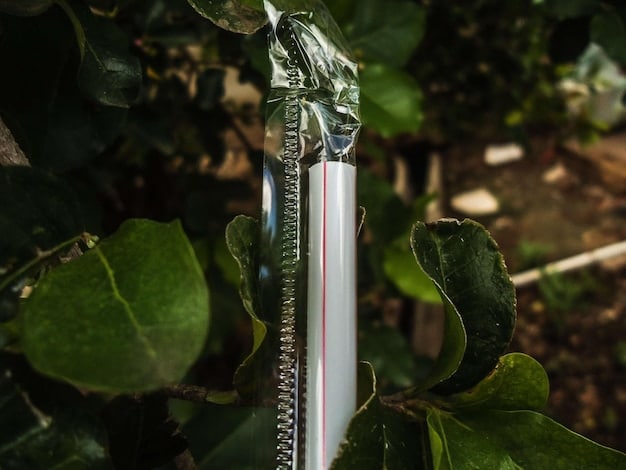
Essential Maintenance for Longevity
Regular maintenance is vital for the long-term performance of your drip irrigation system. The most common issue is clogged emitters, often caused by sediment or mineral buildup in the water. Periodically flush the system by opening the end caps of the mainline tubing to clear out any accumulated debris.
Inspect emitters regularly for blockages or damage. If an emitter is clogged, it can often be cleaned, or if damaged, easily replaced. Check all connections for leaks, which can lead to water waste and reduced system pressure. Seasonal maintenance, such as draining the system before winter in freezing climates, is also crucial to prevent damage.
By dedicating a little time to setup and routine care, your drip irrigation system will reliably provide water-efficient solutions for years, supporting healthy plant growth and conserving precious resources. This proactive approach ensures optimal performance and extends the lifespan of your investment, making it a truly sustainable choice.
Optimizing Drip Irrigation for Various Plant Types
The beauty of drip irrigation lies in its adaptability to a wide array of plant types, from delicate flowers to robust trees and sprawling vegetable gardens. However, optimizing your system requires understanding the specific water needs of different plants. This tailored approach ensures each plant receives precisely the right amount of water, encouraging tailored growth and minimizing waste. One size does not fit all in the world of irrigation.
For annuals and vegetables, which often have shallow root systems and higher water demands during their growth cycle, closely spaced emitters or drip lines provide continuous, gentle hydration. These plants benefit from frequent, short watering cycles to maintain consistent soil moisture without waterlogging. Precision is paramount for these fast-growing crops.
Adapting to Perennials, Shrubs, and Trees
Perennials, shrubs, and trees, with their deeper and more extensive root systems, require different considerations. For these, emitters should be spaced further apart and located strategically to encourage roots to grow deeper, fostering greater drought resistance. Watering cycles can be less frequent but longer in duration, allowing water to penetrate several feet into the soil.
- 🌻 Annuals/Vegetables: Closely spaced emitters, frequent short cycles.
- 🌳 Trees/Shrubs: Widely spaced, deeper emitters, less frequent but longer cycles.
- 🌵 Cacti/Succulents: Very infrequent, minimal water with specialized emitters.
- 🍇 Vines/Groundcovers: Drip lines or soaker hoses for broad coverage.
For individual large plants or trees, a drip ring or multiple emitters placed around the dripline of the plant can ensure even distribution. Adjustments to emitter flow rates (gallons per hour, GPH) are also crucial, with higher GPH emitters suitable for plants with greater water needs or in well-draining soils, and lower GPH for water-sensitive plants or heavy soils.
Soil type also plays a significant role in optimizing drip irrigation. Sandy soils drain quickly and may require more frequent, shorter watering sessions. Clay soils, which retain water more effectively, benefit from less frequent, longer cycles to prevent runoff and ensure deep penetration. Understanding your soil prevents both over and under-watering.
By fine-tuning your drip irrigation system to the specific requirements of each plant type and soil condition, you can achieve remarkable efficiency in water use and foster exceptionally healthy and productive landscapes. This careful calibration transforms a good irrigation method into an outstanding one, truly enhancing the well-being of every plant.
The Ecological and Economic Impact of Drip Irrigation
The widespread adoption of drip irrigation extends far beyond individual gardens; it represents a significant ecological and economic shift, contributing to broader sustainability goals. By dramatically reducing water consumption in agriculture and landscaping, drip irrigation helps preserve freshwater resources, mitigate drought impacts, and lessen the energy burden associated with water pumping and treatment. This ripple effect benefits entire ecosystems and economies.
Ecologically, conserving water through drip irrigation protects aquatic habitats and ensures sufficient water flow for natural ecosystems. It also minimizes agricultural runoff rich in fertilizers and pesticides, which can contaminate waterways and contribute to eutrophication, harming aquatic life. Cleaner water means healthier environments for all species, including humans.
Economic Returns and Community Resilience
Economically, the benefits are substantial for individual growers and regional economies. Lower water bills translate into direct savings, improving profitability for farmers. Reduced energy consumption for pumping lowers operational costs, and healthier plants lead to higher yields and better quality produce, increasing market value. These combined factors enhance the financial viability of agricultural enterprises.
- 💰 Significant reduction in operational costs for water and energy.
- 📈 Increased crop yields and improved produce quality.
- 🌍 Enhanced regional water security and drought resilience.
- 🌱 Minimized environmental pollution from agricultural runoff.
Furthermore, drip irrigation can extend growing seasons or enable farming in areas with limited water availability, opening up new economic opportunities and contributing to food security. In drought-prone regions, resilient irrigation practices become essential for community stability and sustained economic activity. It builds a buffer against environmental challenges.
Beyond the direct economic benefits, the long-term ecological advantages contribute to a healthier planet, which in turn supports sustainable economic development. By investing in water-efficient technologies now, communities are building resilience against future environmental challenges, promoting a future where both human prosperity and ecological health can thrive.
The ecological and economic imperatives are increasingly intertwined, highlighting the urgent need for sustainable practices. Drip irrigation stands as a prime example of a technology that addresses both, yielding profound benefits across the spectrum of environmental and financial well-being.
| Key Benefit | Brief Description |
|---|---|
| 💧 Water Conservation | Reduces water use by up to 70% compared to traditional methods, minimizing waste from evaporation and runoff. |
| 🌿 Improved Plant Health | Delivers water directly to roots, promoting stronger growth, consistent moisture, and reduced disease risk. |
| 💰 Cost Savings | Lowers water bills, reduces fertilizer runoff, and decreases energy costs for pumping. |
| 🌎 Environmental Impact | Protects freshwater resources and minimizes chemical runoff, contributing to healthier ecosystems. |
Frequently Asked Questions About Drip Irrigation
▼
Drip irrigation is highly versatile and can be adapted for nearly all plant types, from vegetables and flowers to shrubs and trees. The key is to customize the emitter type, spacing, and watering schedule to match each plant’s specific needs and the soil type in which it’s growing. This flexibility allows for optimal water delivery for diverse horticultural applications.
▼
Water savings with drip irrigation are significant, typically ranging from 30% to 70% compared to traditional watering methods like sprinklers or hand-watering. This high efficiency comes from delivering water directly to the plant’s root zone, virtually eliminating losses due to evaporation, wind drift, and surface runoff, leading to substantial resource conservation.
▼
No, installing a basic drip irrigation system is surprisingly straightforward for most homeowners. Many kits are available that include all necessary components and detailed instructions. While larger or more complex systems might benefit from professional design, small garden setups can often be completed in a few hours with common tools, making it an accessible DIY project.
▼
The frequency of running your drip irrigation system depends on several factors: plant type, soil type, weather conditions, and the GPH (gallons per hour) of your emitters. Generally, it’s better to water less frequently but for longer durations to encourage deep root growth. Monitoring soil moisture and plant health are the best indicators for establishing an optimal schedule.
▼
The primary maintenance tasks for a drip irrigation system involve regularly checking for clogged emitters, which can be cleaned or replaced, and inspecting for leaks at connections. Periodically flushing the system by opening end caps helps remove sediment buildup. In freezing climates, winterizing the system by draining water prevents damage, ensuring longevity and efficient operation.
Conclusion
The profound benefits of water-efficient irrigation: use drip irrigation to save water and improve plant health are clear and compelling. From conserving precious water resources and reducing environmental impact to fostering healthier, more productive plants and lowering operational costs, drip irrigation offers a comprehensive solution for sustainable gardening and agriculture. Its ability to deliver water with pinpoint accuracy redefines efficiency, ensuring that every drop counts towards a more vibrant and resilient landscape. Embracing this technology is not merely an improvement; it’s a strategic investment in a more responsible and bountiful future, benefiting both our planet and our prosperity.


